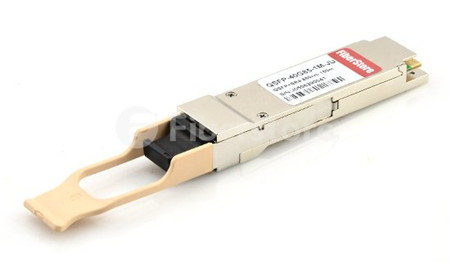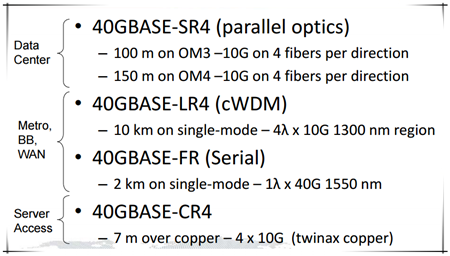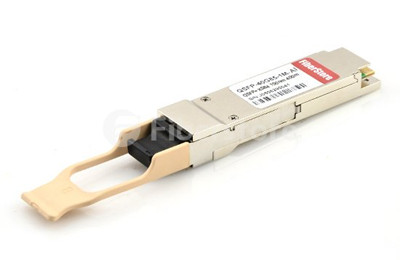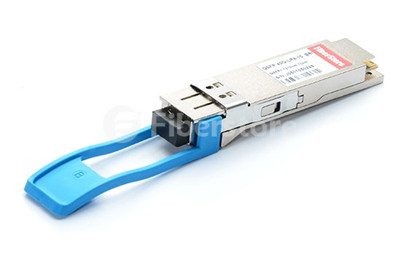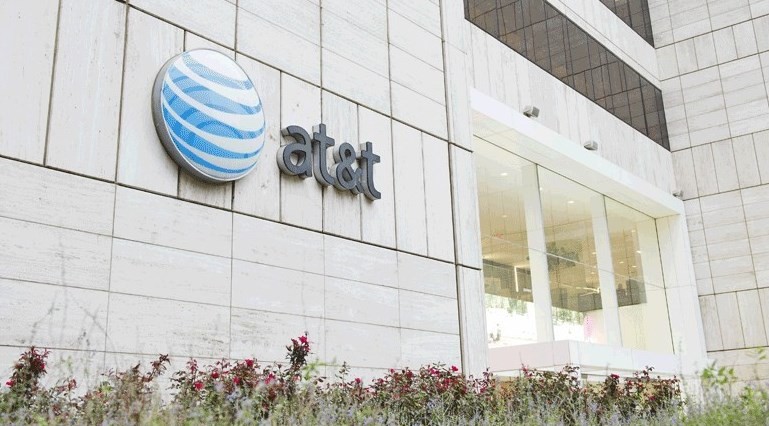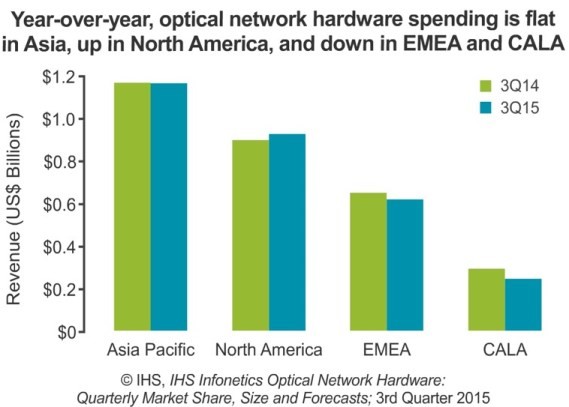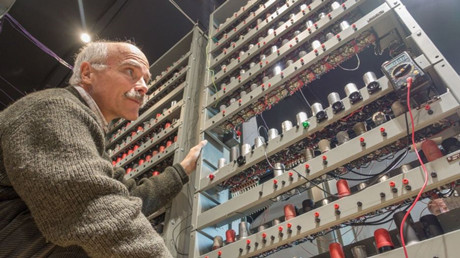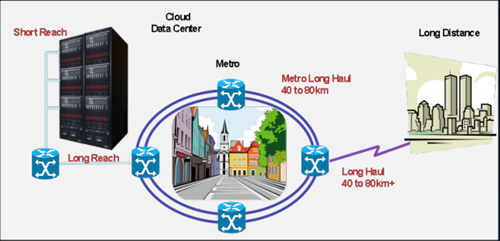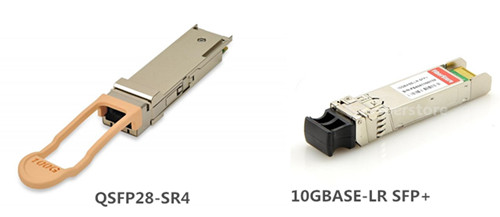Compatible HP SFP+/QSFP+ transceivers provided by Fiberstore are third-party optical modules certificated to be fully compatible with HP Switch/Router product line. These cost-effective HP transceiver modules are well tested before delivered worldwide. HP compatible SFP+/QSFP+ transceivers have the same functionality with the original which can be equivalent to HP J9150A, HP J9151A, HP J9152A, HP JD092B, HP 455886-B21 and so on. The following passage will mainly talk about compatible HP AJ716A and HP JG661A.
HP Compatible SFP+ Modules—AJ716A
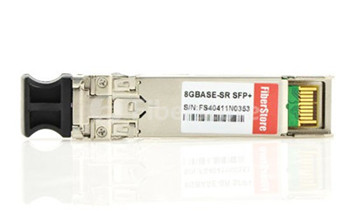 AJ716A is HP compatible 8G SFP+ transceiver module. This enhanced small form-factor pluggable (SFP+) supports bi-directional, serial-optical data transfers across fiber optic networks. The transceiver is equipped with two connectors: a SFP+ male edge connector that plugs into the host system, and a LC connector for the fiber optic cable. This transceiver offers the same function with HP AJ716A and it is fully compatible with HP devices. Figure 1 shows an overview of HP AJ716A.
AJ716A is HP compatible 8G SFP+ transceiver module. This enhanced small form-factor pluggable (SFP+) supports bi-directional, serial-optical data transfers across fiber optic networks. The transceiver is equipped with two connectors: a SFP+ male edge connector that plugs into the host system, and a LC connector for the fiber optic cable. This transceiver offers the same function with HP AJ716A and it is fully compatible with HP devices. Figure 1 shows an overview of HP AJ716A.
The AJ716A also refers to HP AJ716A 8G LC-SR. This module is designed for multi-mode fiber and operates at a nominal wavelength of 850nm. This HP transceiver supports 8 Gigabit connectivity up to 150 m and makes use of advanced class 1 laser technology to accurately transmit data. The primary application of the HP AJ716A is 8G application over multi-mode fiber. Because it is hot-swappable and MSA compliant, this transceiver can be plugged directly into any HP SFP+ based transceiver port, without the need to power down the host network system. This capability makes moves, adds and changes quick and painless.
HP Compatible QSFP+ Modules—JG661A
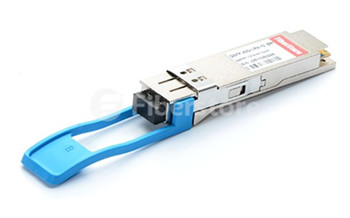 JG661A is HP JG661A compatible QSFP+ transceiver. The Quad Small Form-factor Pluggable (QSFP) optical transceivers have four separate 10G channels to simultaneously operate for supplying 40GbE network and sum up the capacity into a single channel. QSFP modules increase the port-density by 3x-4x compared to SFP+ modules. Figure 2 presents an outlook of HP JG661A for you reference.
JG661A is HP JG661A compatible QSFP+ transceiver. The Quad Small Form-factor Pluggable (QSFP) optical transceivers have four separate 10G channels to simultaneously operate for supplying 40GbE network and sum up the capacity into a single channel. QSFP modules increase the port-density by 3x-4x compared to SFP+ modules. Figure 2 presents an outlook of HP JG661A for you reference.
JG661A supports link lengths of 10km on single-mode fiber cable, at a wavelength of 1310nm. It primarily enables high-bandwidth 40G optical links with duplex LC connectors and can also be used in a 4x10G module for interoperability with 10GBASE-LR interfaces. JG661A offered by Fiberstore is guaranteed to be compatible with the equivalent HP optics module. And it is widely used for 40G Ethernet connectivity.
Why Choose Compatible HP Transceiver Modules?
The first factor that forces people to choose third-party transceiver modules other than original modules is budget. Because the price of the original products is usually three or four times higher than 3-rd party devices. Designers can’t afford it. In addition, the third-party transceiver modules offered by reliable vendors are guaranteed to be well-tested and fully compatible with the major brand. It is feasible to buy compatible HP transceivers from reliable OEM vendors (for example, Fiberstore is an professional manufacturer & supplier of compatible SFP+/QSFP+ transceivers. Products are high performance with very low price.)
The first factor that forces people to choose third-party transceiver modules other than original modules is budget. Because the price of the original products is usually three or four times higher than 3-rd party devices. Designers can’t afford it. In addition, the third-party transceiver modules offered by reliable vendors are guaranteed to be well-tested and fully compatible with the major brand. It is feasible to buy compatible HP transceivers from reliable OEM vendors (for example, Fiberstore is an professional manufacturer & supplier of compatible SFP+/QSFP+ transceivers. Products are high performance with very low price.)
Conclusion
Some detailed information about the above two kinds of products is provided in the previous text, and some characteristics may be missed. HP compatible SFP+/QSFP+ transceiver modules are worthwhile for your network infrastructure. Fiberstore offers a large selection of compatible SFP+/QSFP+ modules including AJ716A, J4858C, JG234A, JG661A, etc. In addition, they can be customized to meet your specific requirement. if you have any question about today’s topic, welcome to contact us.
Some detailed information about the above two kinds of products is provided in the previous text, and some characteristics may be missed. HP compatible SFP+/QSFP+ transceiver modules are worthwhile for your network infrastructure. Fiberstore offers a large selection of compatible SFP+/QSFP+ modules including AJ716A, J4858C, JG234A, JG661A, etc. In addition, they can be customized to meet your specific requirement. if you have any question about today’s topic, welcome to contact us.


